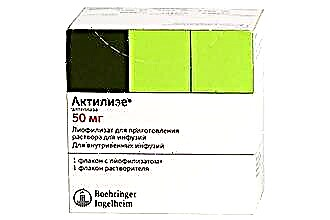Laryngitis is an otolaryngological disease characterized by septic or aseptic inflammation of the mucous membranes of the larynx. The development of pathology is often preceded by colds, tonsillitis, scarlet fever, etc. Using a compress for laryngitis, you can ease the course of the disease and eliminate pathological processes in the vocal cords, larynx and trachea (laryngotracheitis).
Untimely destruction of the pathogenic flora in the foci of inflammation can lead to severe tissue edema and the development of stenosing laryngotracheitis. A significant decrease in the inner diameter of the airways leads to a narrowing of the glottis and respiratory arrest. Local treatment stimulates local immunity, accelerates the regression of inflammation and prevents the development of complications.
What is a compress?
 Compress is a medical bandage consisting of several layers, which is used to resorb local foci of inflammation in the subcutaneous fat or tissues under it. With the development of pathological processes in the ENT organs, the following types of medical dressings are most often used:
Compress is a medical bandage consisting of several layers, which is used to resorb local foci of inflammation in the subcutaneous fat or tissues under it. With the development of pathological processes in the ENT organs, the following types of medical dressings are most often used:
- dry - multilayer dressings to prevent hypothermia of the throat;
- wet - dressings soaked in medicine and warming solutions that eliminate inflammation in the mucous membranes of the larynx.
As a rule, compresses for laryngitis are placed on the throat, which allows the active components of the drugs to penetrate directly into the foci of inflammation. To stop a hacking dry cough, warming applications are placed on the chest, bypassing the heart area.
As part of the local therapy of ENT diseases, alcohol solutions, herbal decoctions and products that have a warming and analgesic effect are used to apply wet dressings. These include:
- essential oils;
- camphor alcohol;
- Red wine;
- interior fat;
- alcohol tinctures;
- powdered mustard.
Warming dressings can be used only at the stage of regression of inflammatory processes.
Physiotherapy treatment should be prescribed only by the attending physician in accordance with the patient's history and the reasons for the development of ENT pathology. Very often, hoarseness, shortness of breath, sore throat and hyperemia of the mucous membranes indicate the development of more serious diseases. Delayed treatment of pathology can lead to the spread of infection and chronicity of pathological processes.
What does the compress consist of?
 Before putting a compress on the throat for laryngitis, you need to find out what layers it should consist of. The intensity of the warming effect and, accordingly, the effectiveness of the procedure depends on the correct application of the medical bandage. Wet compresses should be composed of the following layers:
Before putting a compress on the throat for laryngitis, you need to find out what layers it should consist of. The intensity of the warming effect and, accordingly, the effectiveness of the procedure depends on the correct application of the medical bandage. Wet compresses should be composed of the following layers:
- inner - gauze or cotton cloth soaked in a medicinal solution;
- medium - insulating polyethylene or cellophane film or waxed paper;
- external - medical cotton wool, thick cotton fabric or woolen scarf.
It should be noted that each subsequent layer should be 1.5 cm wider than the previous one. Thus, evaporation of the solution from the gauze surface can be prevented, which will prolong the therapeutic effect of the dressing. Some types of compresses are allowed to be left on overnight. But in this case, the bandage must be fixed with bandages or a scarf.
The healing properties of the compress
If an adult falls ill with laryngitis, first of all, care must be taken to prevent the further spread of the infection. Why? Metabolites of pathogenic microorganisms lead to intoxication of the body, as a result of which an allergic reaction occurs. The manifestations of allergies are swelling, redness and inflammation of the tissues, which lead to the appearance of unpleasant symptoms - pain and sore throat, hoarseness or lack of voice, shortness of breath.
Healing warming dressings help warm tissues, which stimulates the production of antibodies in the body. The increase in the number of neutrophils in the foci of inflammation accelerates the process of destruction of pathogens. Also, the pronounced therapeutic properties of physiotherapy include:
- increased tissue reactivity;
- acceleration of regeneration processes;
- restoration of normal blood circulation in tissues;
- the outflow of excess intercellular fluid from the foci of inflammation;
- resorption of infiltrates and elimination of hypertrophy of the mucous membranes.
Medical dressings with topical irritants can only be applied to skin treated with petroleum jelly or cream to avoid burns.
Intensive heating of the larynx promotes reflex vasodilation, which helps restore tissue trophism. The subsequent acceleration of metabolic processes in cells leads to epithelialization of the affected areas of the ciliated epithelium and the restoration of water-salt metabolism. Thus, there is a decrease in swelling and inflammation in the affected ENT organs, which speeds up the healing process.
Compressing technique
How to apply the warming compress correctly? There is a certain technique of applying medical dressings, the observance of which guarantees the achievement of the maximum possible therapeutic effect. Recovery can be accelerated if the following recommendations are followed:
- gauze must first be folded in several layers, and then soaked in a warming solution;
- an insulating material is applied on top - polyethylene or waxed paper, which should be 1.5-2 cm wider than the previous layer;
- the compress is insulated with a layer of cotton wool to enhance the thermal effect of the warming solution;
- if necessary, the compress is fixed with bandages to prevent its displacement.
A tightly fixed dressing interferes with normal blood circulation and lymph drainage, which can lead to increased swelling in the pharyngeal mucosa.
Mustard compress
 Is it possible to put mustard plasters with laryngitis? Mustard has a pronounced local irritating effect, therefore setting mustard plasters can cause burns. To soften the effect of the essential oils that make up mustard, you must first mix it with flour.
Is it possible to put mustard plasters with laryngitis? Mustard has a pronounced local irritating effect, therefore setting mustard plasters can cause burns. To soften the effect of the essential oils that make up mustard, you must first mix it with flour.
Mustard compress technique:
- mix wheat flour with mustard powder in equal proportions;
- add a small amount of warm water;
- knead the dough and form a small cake no more than 1 cm thick;
- attach the cake to your throat and cover it with plastic;
- after 30-40 minutes, remove the compress, then tie a warm scarf around your neck.
You can not apply mustard on the skin with furunculosis, weeping eczema, contact dermatitis and a tendency to allergic reactions.
The procedure should be performed 2-3 times a day until complete recovery. However, in the event of burns, mustard compresses should be abandoned in favor of more gentle warming agents.
Compress with fat
Animal fat is an effective warming agent with low thermal conductivity. The product contains components that replenish the lack of microelements, vitamins, organic acids, etc. in the body. The restoration of the trophism of the affected tissues has a beneficial effect on the regeneration processes and, accordingly, the healing process.
For therapeutic purposes, badger, interior, goose, goat, and bear fats are most often used.
Mammalian fats are rich in stearic and myristic acids, which help accelerate blood circulation in inflamed mucous membranes.For this reason, they are used in pharmaceuticals in the production of warming ointments and creams. Compress with animal fat promotes deep heating of tissues, resorption of infiltrates and increased tissue reactivity. Unlike mustard powder, fat does not cause irritation and burns, therefore it can be used in pediatric therapy for the treatment of pulmonary diseases in children aged 2 years and older.
When setting a compress, the following sequence of actions must be observed:
- melt 50 g of fat in a water bath;
- soak a gauze bandage in the liquid;
- put gauze on your chest and neck;
- cover the compress with kraft paper and a layer of cotton wool;
- remove the dressing after 5-6 hours.
The effectiveness of this treatment lies in the warming and adsorbing properties of fat. It literally "draws out" toxic substances from tissues, which contributes to tissue desensitization and regression of inflammatory processes. To speed up recovery, the procedure must be performed at least 2 times a day.
Badger fat can be used not only for treatment, but also for the prevention of pulmonary diseases. Having discovered the first symptoms of a cold, you need to prepare a warming compress for the chest and throat. Intensive heating of tissues stimulates the production of immunocompetent cells, which leads to an increase in local immunity and the early destruction of pathogens in the ENT organs.
Dry compress
A dry compress is called a cotton-gauze bandage, which is applied to the throat from hypothermia. Immediately after applying the wet compress, tie a dry bandage or woolen scarf around your neck. A sharp change in temperature in tissues leads to narrowing of blood vessels, impaired blood microcirculation and, accordingly, a decrease in tissue reactivity.
After warming up the pharynx, you cannot go outside and ventilate the room for 2-3 hours. Cold air can provoke a deterioration in well-being and exacerbation of local symptoms of laryngitis. Dry compresses are removed after 10-15 minutes and after 2-3 hours a moist warming bandage is again applied to the throat.
You can enhance the warming effect of the dry compress with the “Zvezdochka” balm, which contains camphor, peppermint extract, oil of carnation and eucalyptus flowers. Rub a small amount of balm into your throat before applying the bandage. However, before using the next wet application, remove the remains of the product with soapy water.

 Medical dressings with topical irritants can only be applied to skin treated with petroleum jelly or cream to avoid burns.
Medical dressings with topical irritants can only be applied to skin treated with petroleum jelly or cream to avoid burns.

